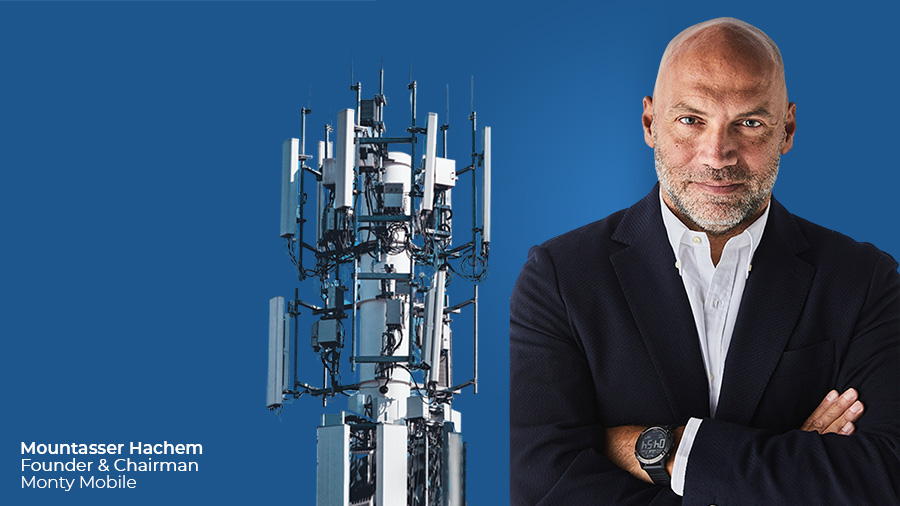Press Releases
Survey Reveals Businesses are all in on Wireless WAN

Cradlepoint, the global leader in cloud-delivered LTE and 5G wireless network edge solutions, today released findings from its annual State of Wireless WAN Report, compiled by IDG. The results confirm that the era of Wireless WAN has firmly arrived and is the critical infrastructure in driving innovation, including playing a role in business recovery from the pandemic. The survey findings demonstrate confidence and excitement for 5G, pointing to increasing adoption in the coming year.
“Having a secure, flexible, and reliable WAN edge is more critical to business success than ever,” says Donna Johnson, Vice President of Product and Solution Marketing at Cradlepoint. “As organisations look to adapt to a new normal and get back to business, Wireless WAN solutions uniquely enable network agility while enhancing security and scale.”
Traditional wired WANs are complex, slow to adapt, and applicable to only fixed locations. As businesses reinvent the way they serve their customers, they are increasingly turning to Wireless WAN technology to connect people, places, and things anywhere. Key findings from the report include:
Wireless WAN’s Rise to Dominance
The agility required by pandemic-hastened business transformation and the growing number of connected devices are the top reasons businesses are turning to Wireless WAN solutions.
Bandwidth is another significant factor in the increased use of Wireless WAN links. 57% of respondents said bandwidth is a reason for adopting broadband, and 49% said it was a reason for choosing LTE. Today’s cellular networks are approaching fiber-fast speeds and provide rapid deployment capabilities that are unparalleled.

LTE Enables Business Agility
As businesses scramble to create new services and find new ways to engage and serve their customers, WAN flexibility is essential. 51% cited the flexibility of LTE to enable new services as a top reason for turning to Wireless WAN solutions.
78% of companies surveyed either use or plan to use LTE to provide WAN or internet connectivity to at least some locations, but the use of LTE is also expanding beyond just the branch. 53% of companies are using it to connect in-vehicle networks, and 77% are connecting IoT devices. Additionally, 40% of respondents are using LTE to connect fixed locations, vehicles, and IoT, making LTE the top choice for connecting people, places, and things across the rapidly expanding WAN edge. This metric helps explain why 62% of enterprises plan to increase their use of LTE in the next three years.
5G: Ready to Takeoff
IT decision-makers believe in the promise of 5G, with 67% either confident or very confident 5G will deliver business benefits within the next year. 82% believe 5G will deliver increased WAN speeds within the next year, and 66% think it will provide improved reliability.
Cradlepoint provides enterprise and government organisations with a clear pathway to 5G and has delivered the world’s first and most comprehensive 5G WAN edge solution for business. 5G solutions are available through Telstra in Australia, with additional carrier partners and markets to be announced later in 2020.
“It’s no secret that the ongoing pandemic has forced businesses to be more innovative and creative than ever, and Wireless WAN has proven to be a critical enabler,” Johnson says. “With the emergence of 5G bringing faster speeds and smarter cellular networks, the ascension of Wireless WAN as critical infrastructure is inevitable.”
Press Releases
Monty Mobile: The First Company in the Middle East & Africa to Provide 5G End-to-End Solutions for Telcos

Monty Mobile provides an in-house, cost-effective, well-optimized 4G+ and 5G end-to-end wireless solution serving both small and large-scale mobile and fixed operators targeting both urban and rural areas.
Moreover, operators are offered flexible payment plans for up to 5 years, first payment after 3 years, helping them stay ahead of their competitors.
This on- cloud solution guarantees improved scalability, mobility and security in addition to great savings on both CapEx and OpEx.
With this solution, Monty Mobile is introducing an alternative to Tier1 Telecom Suppliers such as Ericsson, Huawei, Nokia, and ZTE.
“The best is yet to come; stay connected!”, says Mountasser Hachem, Founder & Chairman of Monty Mobile.
More details regarding this full end-to-end solution will be disclosed in the Inside Telecom magazine next month in an exclusive interview.
Press Releases
Africa’s Leading Independent Telecommunications Services Provider, Phase3 Telecom moves onto Digital Connectivity Enterprise in Nigeria and West African Sub-region

The upgrades will cover security features, performance enhancements. agile update capacity and quality delivery mechanisms.
ABUJA, Nigeria, March 10, 2022: Africa’s leading independent aerial fiber optic network infrastructure and telecommunications services provider, Phase3 Telecom, is enabling advanced digital connectivity, improved performance and enhanced network security for enterprise. This drive is targeted at cost efficient and unified network endpoint management for businesses in Nigeria and the West African sub-region.
This development is also designed to amplify Phase3 enterprise value active network deployments for MSMEs, large scale corporates and institutions.
According to the company’s executive chairman – Stanley Jegede, “this expansive service optimization is targeted at improved coverage on Phase3 network routes through Africa as well as to assure solutions that help businesses transform and scale seamlessly.
He says, “Phase3 current network upgrades is an ongoing exercise and will cover security features, performance enhancements, agile update capacity, and quality delivery mechanisms for enterprise segments. Especially in the areas of productive work-from-anywhere or do-business-from-anywhere and digitized remote connectivity solutions”.
In addition to the company’s focus to increase enterprise based networks data handling capacity and their capability to access data within dissimilar sources faster vis-a-vis smarter, as today’s global clime demands.
Jegede, in his concluding statement says, “Phase3 layered digital capabilities will both enhance Phase3 network architecture and compliment legacy connectivity service experience in remote locations with significant Phase3 presence and network access points.
About Phase3 telecom
Phase3 Telecom is a leading independent fiber optic infrastructure with Points-of-Presence (POPs), colocation, and NOCs in Nigeria. Issued a National Long Distance Operator (NLDO) license in 2003 by the Nigerian Communications Commission (NCC), and with a vibrant as well as a dedicated team of experienced professionals, we are the network of choice for high-performance, data-intensive and low latency connectivity that span dedicated internet access, MPLS VPN, metro ethernet, wide area network solutions etc. We currently operate across the ECOWAS region and international markets through strategic partnerships that allow us to connect our clients across 400 cities worldwide. And ours is an extensive and secure network with end-to-end capabilities that service providers and businesses can rely on to scale, manage costs and assure efficiency. As our network continues to evolve into other layered service streams, including cloud-based and network security solutions – our invaluable clients will continue to remain the core of every investment that we make; innovation that we create; and technology that we adopt during the 4th industrial revolution to position us as the network of the future.
Press Releases
Digital Therapeutics Revenue from Health Insurers to Reach $8 Billion Globally by 2026

Hampshire, UK – 14th March 2022: A new study from Juniper Research has found that digital therapeutics revenue from health insurers will increase to $8 billion by 2026, up from $1.1 billion in 2022; representing a growth of 610 percent over the next four years. Digital therapeutics are clinically validated software programs for the treatment of chronic medical conditions, either independently or in conjunction with other therapies.
The report found that digital therapeutics facilitate the proactive mitigation of chronic medical conditions before they require costly interventions; enabling health insurers to reduce long-term costs per patient. However, it highlighted that these savings will be limited to health insurers in developed regions, where consumer devices and digitalized health infrastructure are ubiquitous. As such, it noted that health insurers in Africa and Latin America will contribute less than 2 percent towards health insurer-led digital therapeutics revenue in 2026.
A new research, Digital Therapeutics & Wellness: Key Trends, Business Models & Market Forecasts 2022-2026, identified that insurers will also benefit from an ongoing shift among digital therapeutics vendors towards engagement- and results-based payments. It recommends that therapeutics providers looking to leverage this trend prioritize the development of performance benchmarks, as demonstrating improvement and preventing patient abandonment will become a direct monetary issue.
Machine Learning to Move into Advisory Role as Liability Issues Emerge
The report forecasts that the number of people using digital therapeutics will increase by 381% over the next four years, and recognizes that machine learning will be key to this growth by facilitating advanced data analytics, remote patient monitoring, and real-time conversational coaching. However, it cautioned that an ongoing lack of standards surrounding the use of machine learning within digital therapeutics will result in vendors limiting its role in their offerings.
Research author Adam Wears explained: “As developers and healthcare providers increasingly grapple with issues of liability and malpractice, machine learning will transition from a patient-facing role to a diagnostic tool offered through provider-facing dashboards; to be used by clinicians and specialists in a manner akin to traditional computer-aided diagnostics.”























